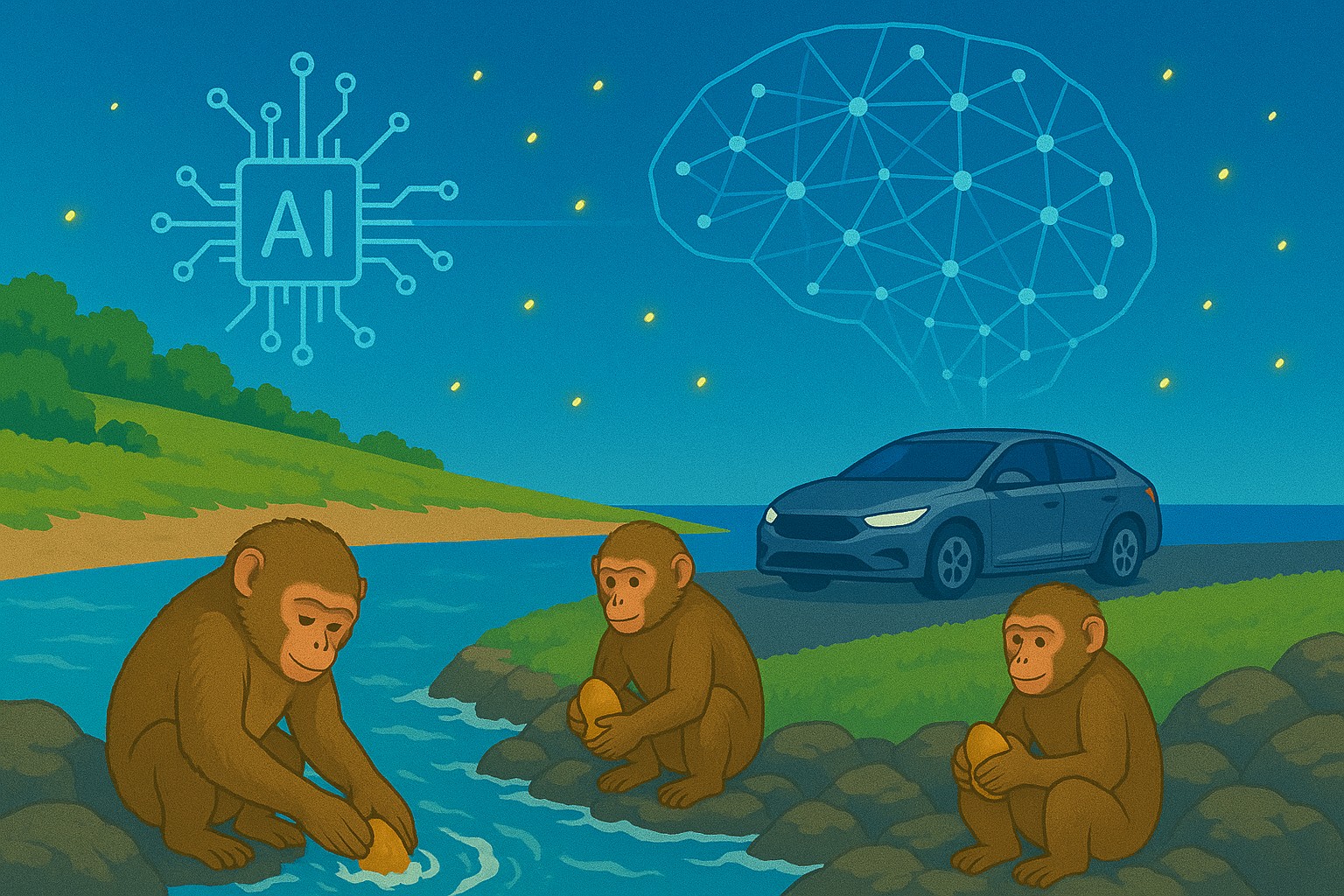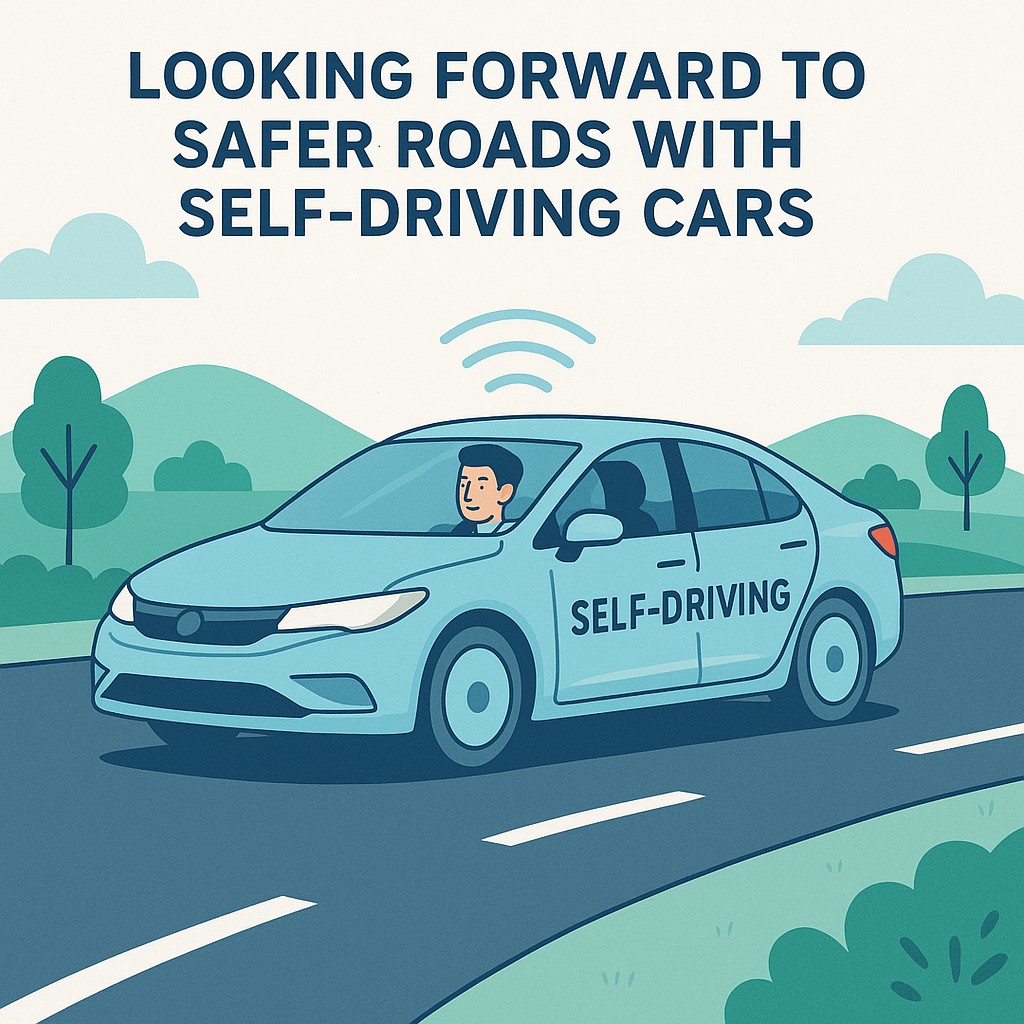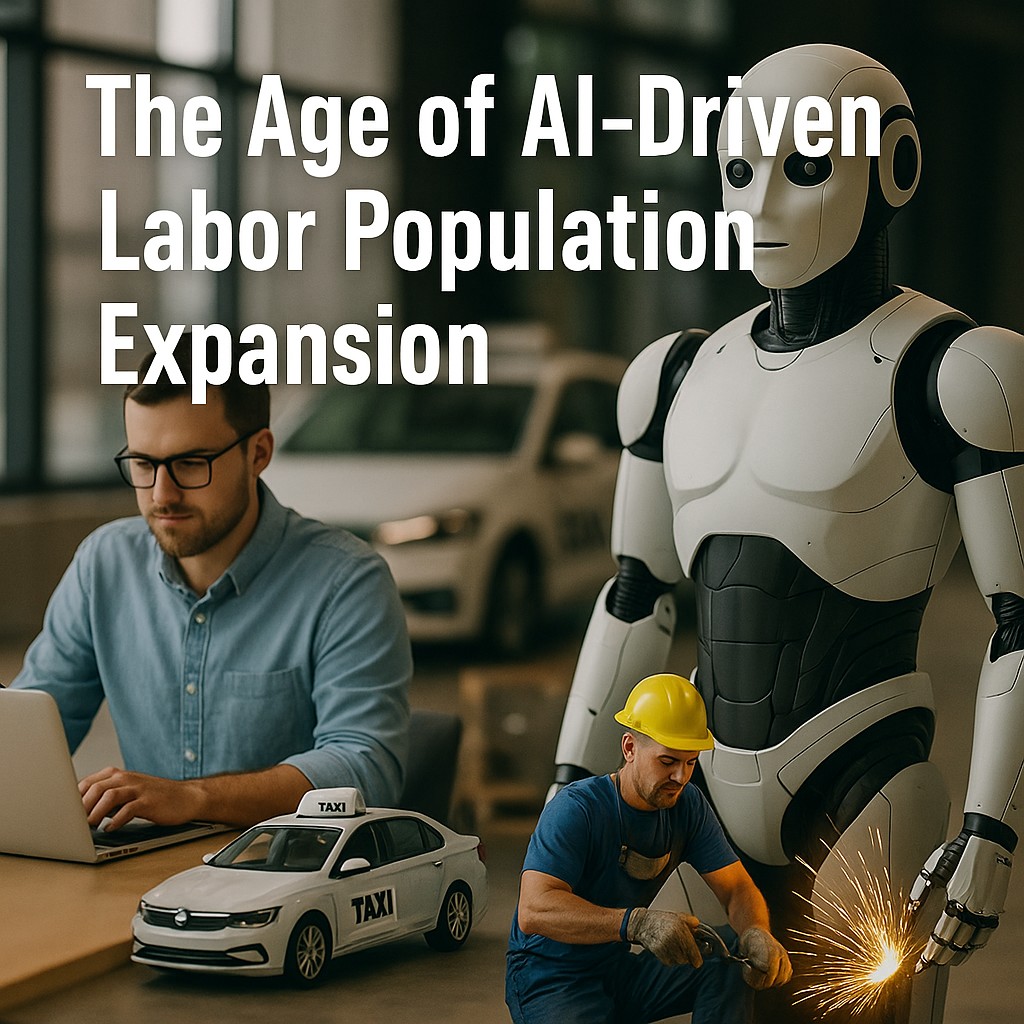When I look at the natural world, I often wonder: to what extent can living organisms engage in parallel learning and reasoning? While it’s obvious that animals—especially humans—share information using language or symbols, what fascinates me even more are those mysterious phenomena where knowledge or behavior acquired by one individual seems to spread to others in distant locations, without any direct communication.
A well-known example is the “Hundredth Monkey Phenomenon.” According to reports, a monkey on a Japanese island began washing sweet potatoes before eating them. Over time, this behavior spread to other monkeys on the island, and eventually, monkeys on nearby islands—despite no physical contact—were said to adopt the same behavior. While the scientific accuracy of this story is debated, it suggests the intriguing possibility of behavioral transmission on a collective level.
Another striking case is the synchronized flashing of fireflies. In certain species, large groups of fireflies spontaneously synchronize their light patterns. This isn’t directed by any leader or central controller, but emerges from simple interactions between individuals. It’s a powerful example of how distributed systems can achieve remarkable coordination.
If such collective learning or reasoning mechanisms could be replicated—or even enhanced—in humans, it would be revolutionary. Imagine a world where knowledge gained by one person instantly becomes accessible to everyone.
As a child, I used to believe that even if there weren’t any extraordinary people around me, there must be brilliant scientists, engineers, doctors, or political leaders somewhere in the world who could solve any problem—be it a natural disaster or an unknown disease. But as I grew older, I realized that the world isn’t that simple. Even when great minds or cutting-edge technologies exist, they are often locked away behind patents, trade secrets, or expensive licensing agreements. And even then, it takes years of research and significant financial investment to bring advanced technologies into practical use.
In the world of artificial intelligence, we face similar challenges. How can we effectively implement parallel learning and parallel reasoning across distributed systems? And once we do, how can we make the resulting knowledge accessible and usable for everyone? These are not easy questions, but I remain hopeful.
Someday, I believe we’ll reach a point where human and AI intelligence can truly collaborate—learning, reasoning, and sharing knowledge instantly and globally.
カテゴリー: Social system
-

Learning from Nature: Parallel Learning and Reasoning in AI
-

Looking Forward to Safer Roads with Self-Driving Cars
The spread of AI-powered self-driving cars is giving us hope for a big drop in traffic accidents around the world. One exciting piece of news is that Tesla (TSLA) is reportedly set to launch its robotaxi service in Texas on Thursday, June 12, 2025.
While many articles focus on the debate between electric vehicles (EVs) and gasoline-powered cars, I believe we should also talk more about the benefits of autonomous driving. This technology has the potential to change not only how we travel, but also how safe our roads can be.
If self-driving cars become widely used, we could see a huge reduction in accidents. That means fewer injuries and deaths, and much lower transportation costs.
I asked ChatGPT to estimate the impact. If traffic accidents were reduced to just one-tenth of current levels, the world could see 1.07 million fewer deaths and 18 to 45 million fewer injuries each year. On top of that, the cost of handling traffic accidents could be cut by around $1.6 trillion annually.
I’m truly looking forward to the day when self-driving cars are a normal part of everyday life—and our roads are much safer for everyone.
-

The Age of AI-Driven Labor Population Expansion
As I use AI tools like GPT and Grok in my daily routine, I’m continually amazed by the speed at which AI technology is advancing. Nowhere is this transformation more visible than in the United States. Under its second Trump administration, the U.S. is undergoing significant structural shifts — with drastic reductions in government staff, rapid integration of AI into public agencies, and accelerated adoption of AI in the education sector. At the same time, immigration policies are becoming markedly stricter.
These changes seem to reflect a new reality: AI is driving an unprecedented expansion in the effective labor force. The Trump administration appears to be moving quickly to adapt to this monumental shift.
And the impact isn’t limited to office workers. In 2025, the rise of physical AI — like robotaxis and Tesla’s humanoid robot “Optimus” — is beginning to dramatically boost the productivity and capacity of blue-collar labor as well.
As AI adoption spreads, we’re also witnessing a major shift in the types of talent that are in demand. In Japan’s stock market, significant crashes occurred during the SQ (Special Quotation) weeks of August 2024 and April 2025. With AI engaging in fast, uninhibited trading, the gap between those who made large profits and those who incurred heavy losses has become increasingly apparent. This dynamic is likely to trigger a shake-up among key players — not only in financial markets but across broader industries as well.
Nikkei225(JPY)